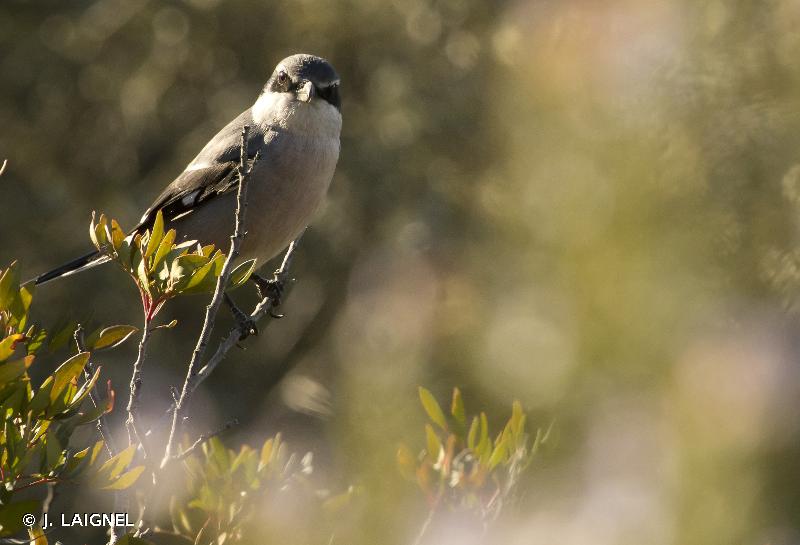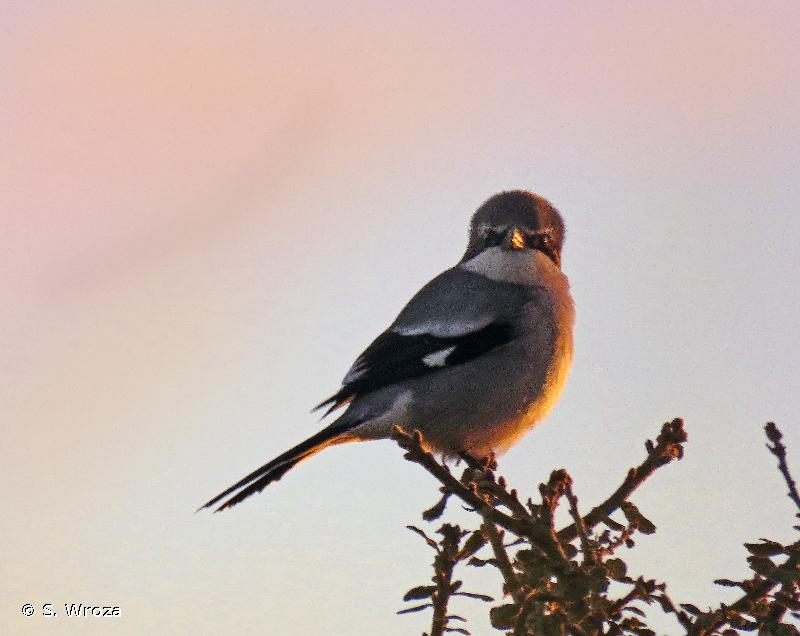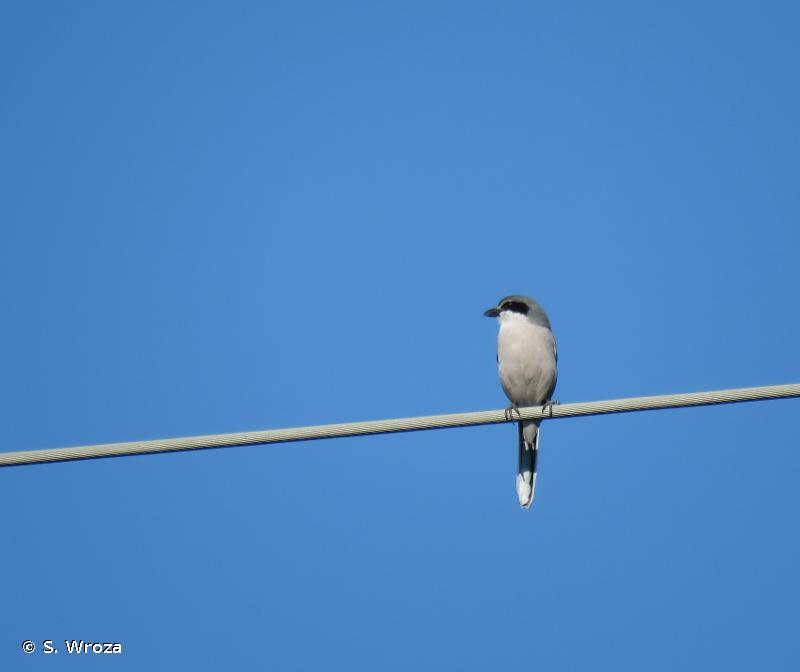
cd_nom

| Author : J. LAIGNEL |
 |
To get the picture, please visit:
Julien Laignel
Chargé de mission SNB - SPN/MNHN
4, avenue du Petit Château
91800 BRUNOY
Tel.: 06.10.68.23.36
Mail: julien.laignel@9online.fr
Despite the Creative Commons license, please inform the author of the use which will be made of his photo

| Author : S. Wroza |
 |
Despite the Creative Commons license, please inform the author of the use which will be made of his photo

| Author : S. Wroza |
 |
Despite the Creative Commons license, please inform the author of the use which will be made of his photo
Taille/poids :
Longueur totale : environ 25 cm. Poids : environ 70 g.
Diagnose :
Silhouette et allure typiques : bec crochu et « masque » noir surmontés d'un sourcil blanc très net. Le dessus est gris de plomb. Les ailes noires terminées de blanc présentent un petit miroir blanc. La queue noire est bordée de blanc. La gorge et les joues blanches contrastent avec le reste des parties inférieures d'une belle couleur rose lilas.
Détermination :
Simple. Facile sur photo.
Espèces proches :
La Pie-grièche grise Lanius excubitor est assez semblable, mais ses parties supérieures sont moins sombres et le dessous est blanc ou blanchâtre. La Pie-grièche à poitrine rose Lanius minor présente des similitudes, surtout avec le dessous rose violacé. Sa silhouette est cependant différente et les adultes se caractérisent par un bandeau noir très net sur le front.
Période d'observation :
Toute l'année. Apparaît en hiver dans des régions où elle ne niche pas.
Biologie-éthologie :
Le régime alimentaire comprend beaucoup d'insectes et peu de micro mammifères. Là où ils sont disponibles, les lézards jouent un rôle important, et des oiseaux sont régulièrement prélevés.
Biogéographie et écologie :
Répartition mondiale restreinte du fait de révisions taxonomiques : l'espèce niche uniquement dans la péninsule ibérique et dans le sud de la France. Le litorral méditerranéen constituerait l'habitat originel de l'espèce. Les secteurs de garrigue basse à chênes kermès, les habitats arides semi-steppiques et les landes à buis sont parmi les habitats les plus favorables. Des secteurs plus anthropisés dominés par la vigne l'attirent également, à condition que subsistent des prairies et des buissons. Localement, l'espèce peut profiter de l'ouverture des paysages provoquée par des incendies.
Compilé par J. Comolet-Tirman à partir des Cahiers d’habitats.(UMS 2006 Patrimoine Naturel (AFB / CNRS / MNHN)),2017
Continental
Metropolitan France
Overseas
Marine
Metropolitan France
Overseas
The map presents a summary at the 10 x 10 km grid of the observation data for the species transmitted to the SINP. These data have been subjected to validation filters.
The map presents a reference distribution layer of the species at the scale of departments and marine sectors. The presence and absence data were established by expertise within a network of partners. This reference distribution is used in the validation process of the SINP data at the INPN level.
Corresponds to a report on the basis of at least one observation proved within a period of 10 years (20 years for little-known invertebrates) preceding the year and no presumption of extinction since obtaining the last data nor doubt on reproductive and implemented nature of this population. For migratory species, the presence indicated concerns areas of reproduction.
This status is based on one or more of the following criteria:
This point covers the absence, more difficult by nature to demonstrate than presence. This status is based on one or more of the following criteria:
This status must be assigned to a department in which the presence of the species is casual.
Particular case of absence due to a proven extinction less than a half century ago (older disappearances are treated as "no probable or definite").
In the state of knowledge, we can not comment on the presence or absence in the current department. This is the default status when not comprised in one of the previous categories or whenever there is doubt.
The map shows the global distribution of the species based on GBIF data (Global Biodiversity Information Facility).
